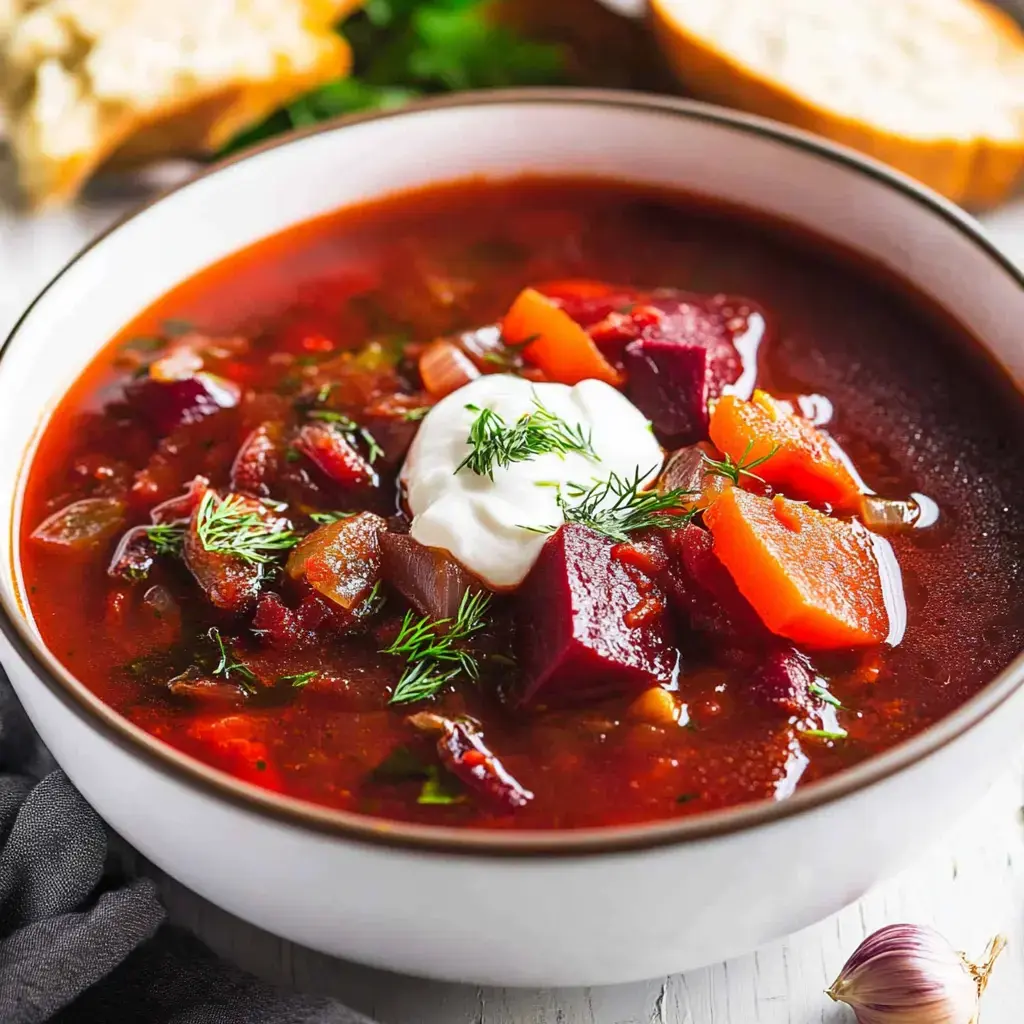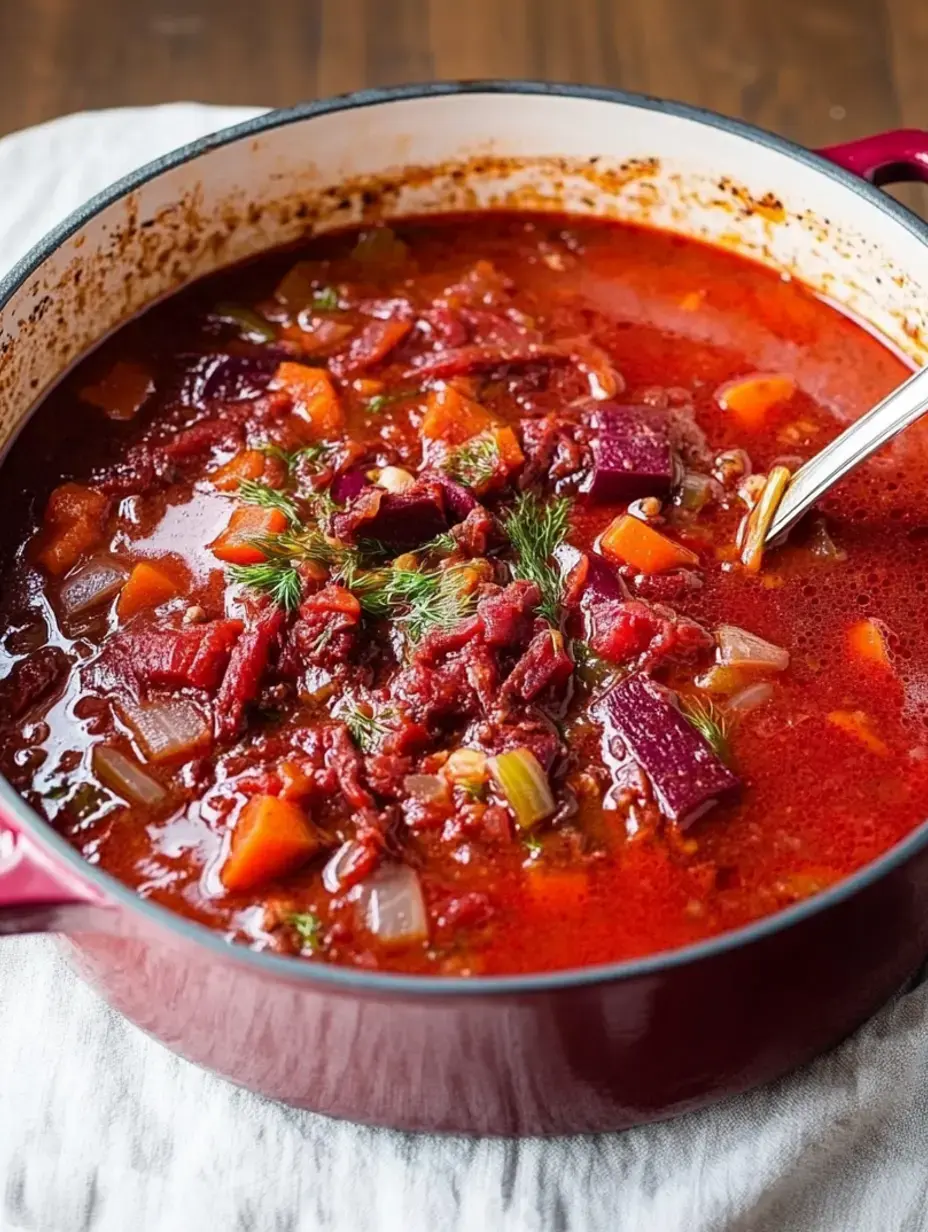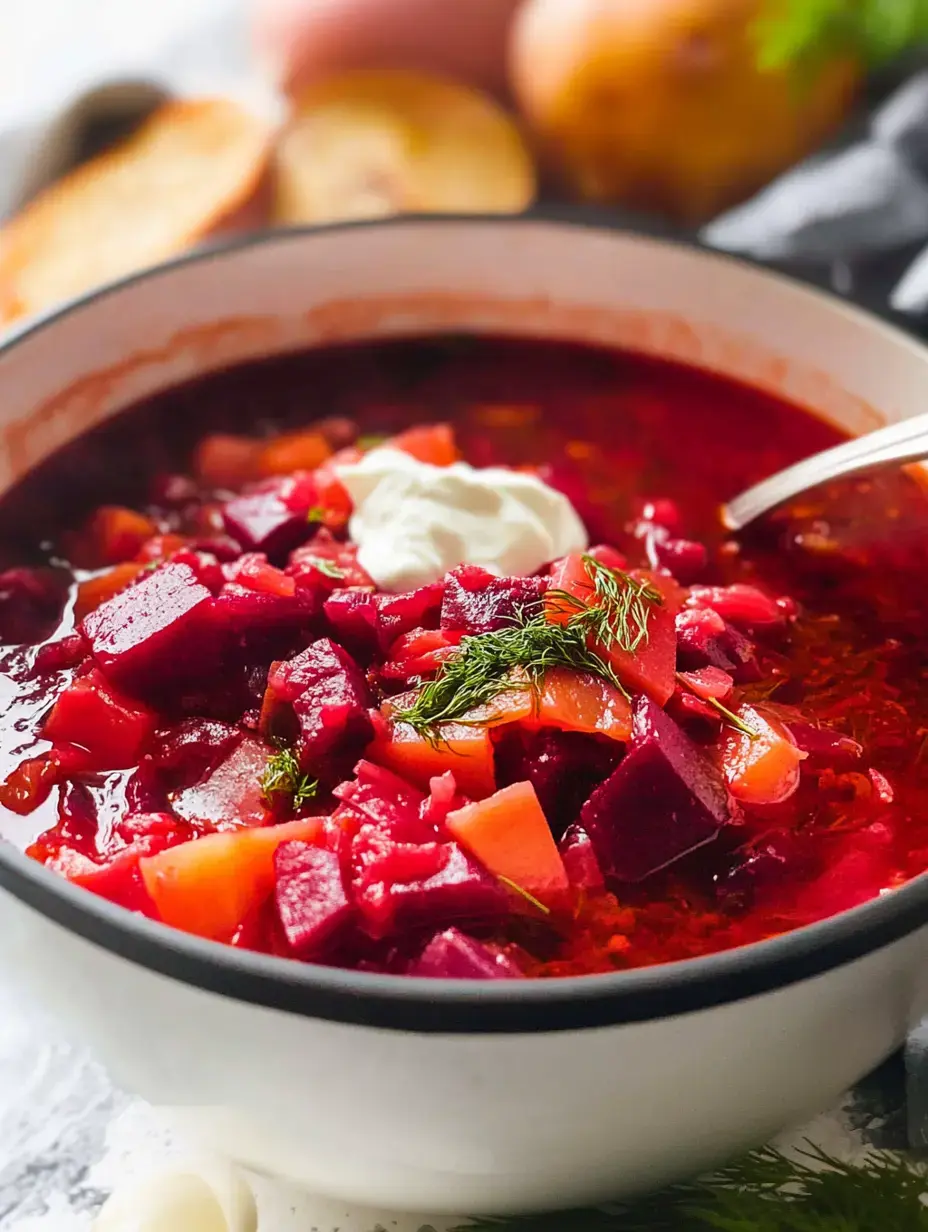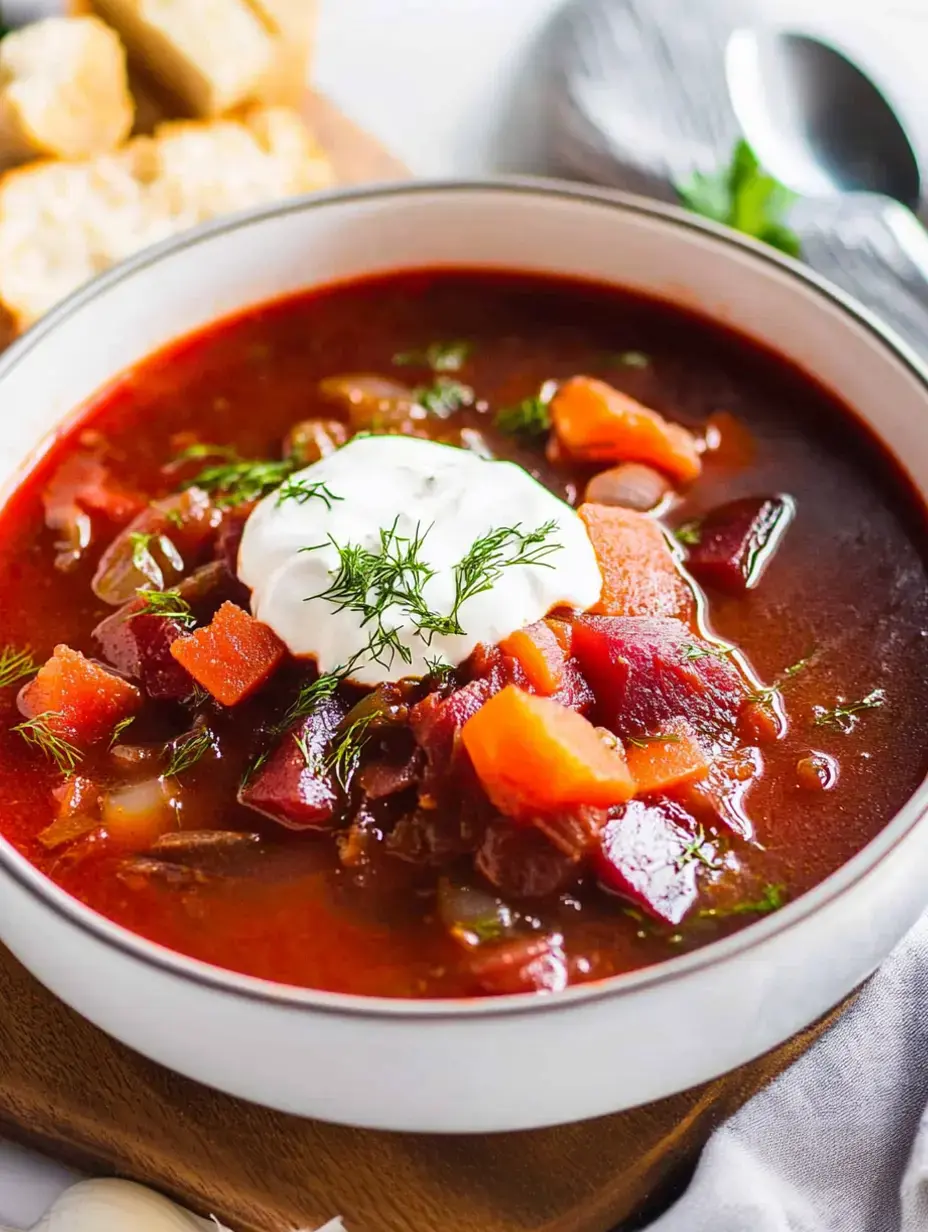 Save this
Save this
My grandma's cherished borscht has traveled through our Ukrainian family for ages. When I cook this bright soup, I'm whisked away to her small kitchen where I'd watch her slice beets and toss in just enough spices. The smell of dill and garlic always brings back memories of those family Sunday meals.
Heart of Ukrainian Cooking
Borscht goes beyond just being soup—it's what Ukrainian food is all about. Grandma would say your borscht tells people who you are as a cook. Each household makes it their own way, but some things never change: that stunning deep red from the beets, soft veggies, and that comforting broth that warms you up good.
Picking Perfect Ingredients
Great borscht begins with grabbing the best stuff. I always grab young beets with their greens still on—they're softer and sweeter. Your cabbage should feel solid and weighty. And grab those waxy potatoes because they won't fall apart while they're cooking.
The Method
Cooking borscht feels like you're doing a kitchen dance. You kick things off with beef bones making a thick broth. Then comes the steady chop of veggies, each going in at the right moment. There's something magical about dropping in those beets and watching everything turn that beautiful deep red.
Working With Beets
Grandma showed me to treat beets with respect—peel them slowly and cut them the same size. I'm a fan of cutting them into thin strips so they cook the same and look fancy in your bowl. Don't toss those green tops either—they pack so much flavor into your soup.
 Save this
Save this
Creating Deep Taste
Your soup base needs to taste amazing and rich. Whether you go with beef, chicken, or just veggies, that deep flavor can't be skipped. I love how the whole house smells as it bubbles away, letting everyone know something good's coming.
Serving The Old Way
In our house, putting borscht on the table is almost like a little ceremony. Every bowl gets a fluffy dollop of sour cream—grandma wouldn't have it any other way. We throw plenty of fresh dill on top, and there's always dark rye bread nearby for soaking. These small touches make it feel special.
Hitting The Sweet Spot
Getting that perfect mix of sweet and tangy takes some practice. The natural sweetness from beets and carrots works against the kick from vinegar. I always taste it at the end, maybe adding a tiny bit of sugar or a splash more vinegar until it feels just right.
Cooking Big Batches
Borscht actually tastes better the next day. I always cook a huge pot knowing the flavors will get stronger overnight. Plus it feels good knowing there's homemade soup waiting in the fridge whenever you want some comfort food.
Storing Your Soup
The great thing about borscht is how long it lasts. I keep mine in the fridge with a lid and it stays tasty for about a week. For keeping it longer, I put portions in containers and freeze them, making sure to leave room at the top. It's like having a bit of home waiting in your freezer.
 Save this
Save this
Warming It Up
You need to warm up borscht the right way. I always do it slowly on the stove, never in the microwave. This keeps all the different textures and lets the flavors come back gently. Add some fresh dill and it'll taste like you just made it.
Fresh Greens Count
You can't skip fresh dill and garlic in my kitchen. That pop of herbs at the end pulls everything together. I grow dill in my yard during summer just for borscht, and cutting it makes me think of grandma doing the same thing back in her day.
The Right Side Bread
You need good rye bread with borscht. Dark, heavy, and a bit sour—it works perfectly with the soup. Sometimes I'll warm it up a bit, but we usually eat it fresh just how grandma did.
Hot Weather Version
When it gets hot outside, we often eat our borscht cold. It's so cool and the flavors feel crisp and clean. A spoonful of cold sour cream and extra dill make it a perfect meal for summer days.
Healthy Too
I love that our family dish is actually super good for you. The beets are full of vitamins, the cabbage gives you fiber, and all those veggies make such a nutritious meal. Grandma always told us borscht heals both your body and your spirit.
 Save this
Save this
Veggie Friendly Choice
While old-school borscht uses meat, my veggie friends are happy it's so easy to change up. A veggie broth works great, and throwing in some beans makes it filling enough for a full meal. The soul of the dish stays put.
Every Home's Different
It's cool how each Ukrainian household makes borscht their own way. Some folks add beans, others throw in mushrooms. My grandma's way was pretty straightforward, letting the veggies be the stars. These small touches make each family's version one of a kind.
Starting Strong
That first step of cooking veggies down—what we call zazharka—really matters. That's where your flavor starts building. I enjoy watching carrots and onions turn golden and smell amazing, knowing they'll make the final soup taste so much better.
How You Slice Things
The way you cut everything really counts. I learned by watching grandma's careful knife work. Each veggie needs its own treatment—thin strips for cabbage, little sticks for beets, squares for potatoes. All this changes how the soup feels when you eat it.
Beyond Just Eating
Making borscht isn't just about cooking food. It's about staying connected to where we came from, showing love through meals, and keeping family ways going. Whenever I make it, I can almost feel grandma standing next to me, guiding my hands and sharing her warmth.
 Save this
Save this
Common Questions
- → Can I make this vegetarian?
- You bet! Switch to veggie broth and toss in some beans for extra protein. Maybe add a bouillon cube and some more olive oil to bump up the taste.
- → How long does it keep?
- It'll stay good in your fridge for about 5 days or pop it in the freezer for up to 3 months. Just warm up what you'll eat right then.
- → Can I add meat?
- Sure thing! First make your broth with beef bones or ribs, let it bubble away for about an hour. Take the meat out, chop it up, and mix it back into your soup.
- → What makes it more authentic?
- Throw in some sauerkraut instead of part of the cabbage for that real deal flavor. Don't forget to serve it with a big spoon of sour cream and chunks of rye bread.
- → Why add vinegar and sugar?
- They work together to even out the taste - vinegar brings a nice zing while a touch of sugar or maple syrup takes the edge off those tangy beets and tomatoes.
